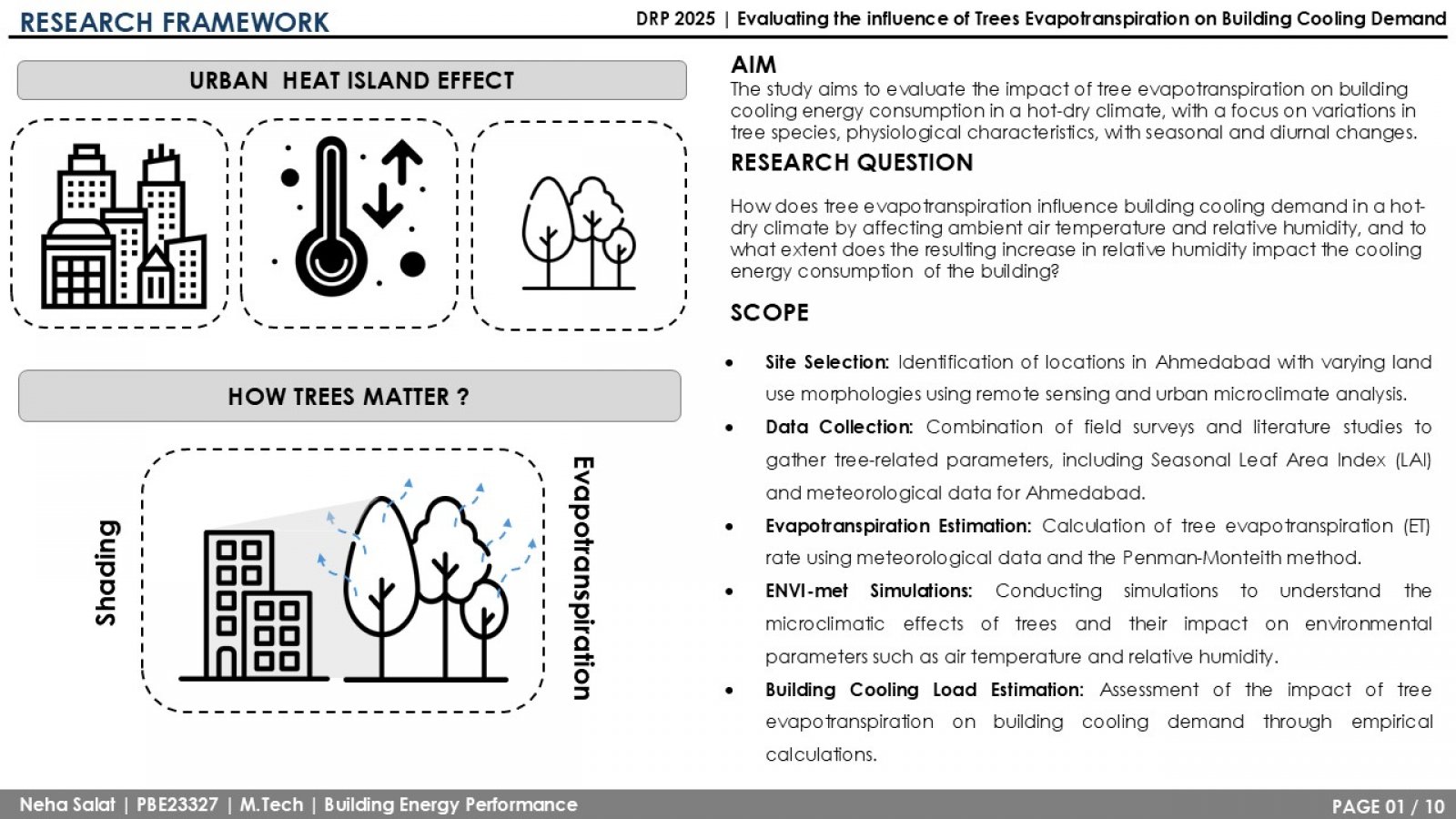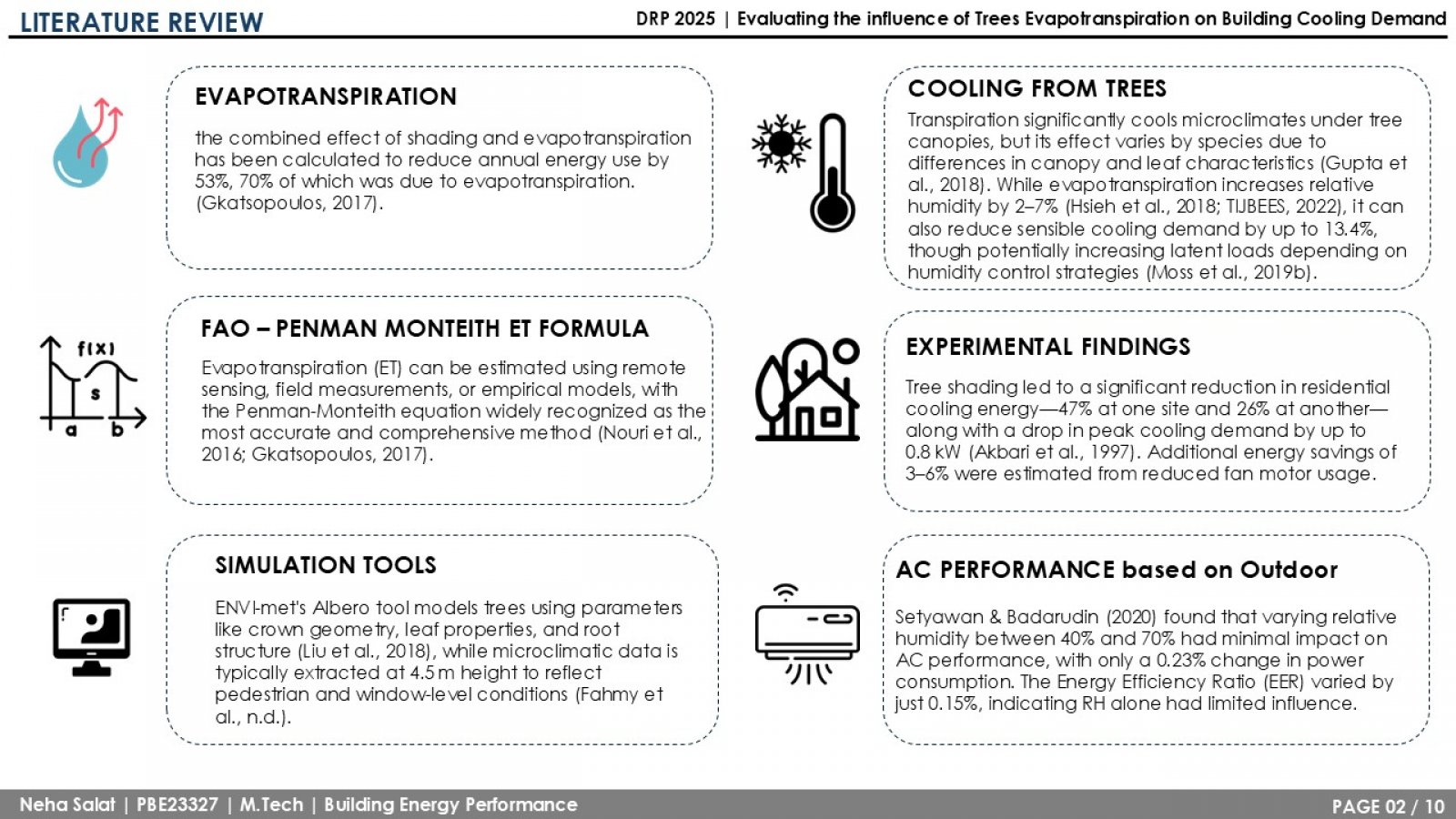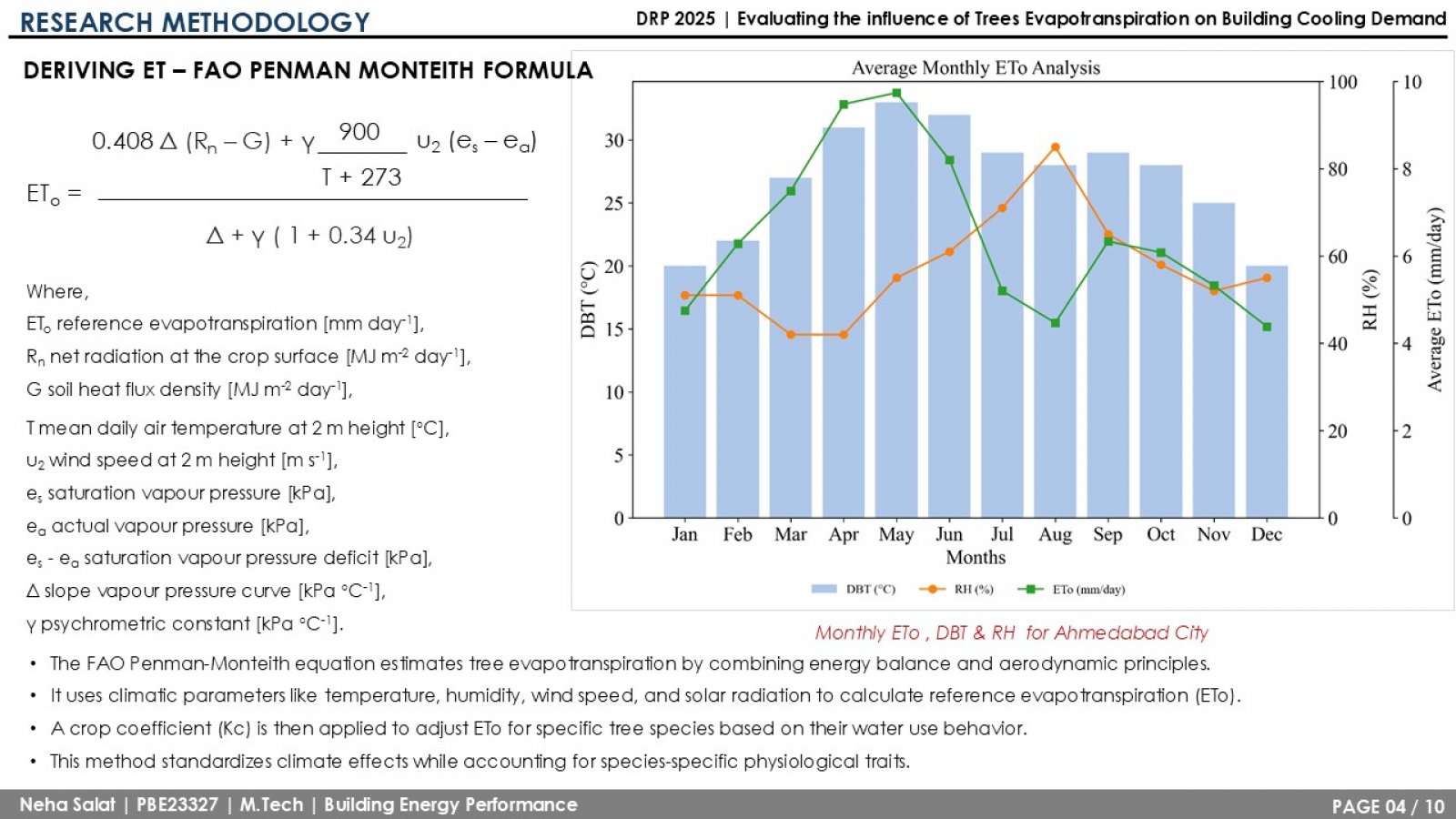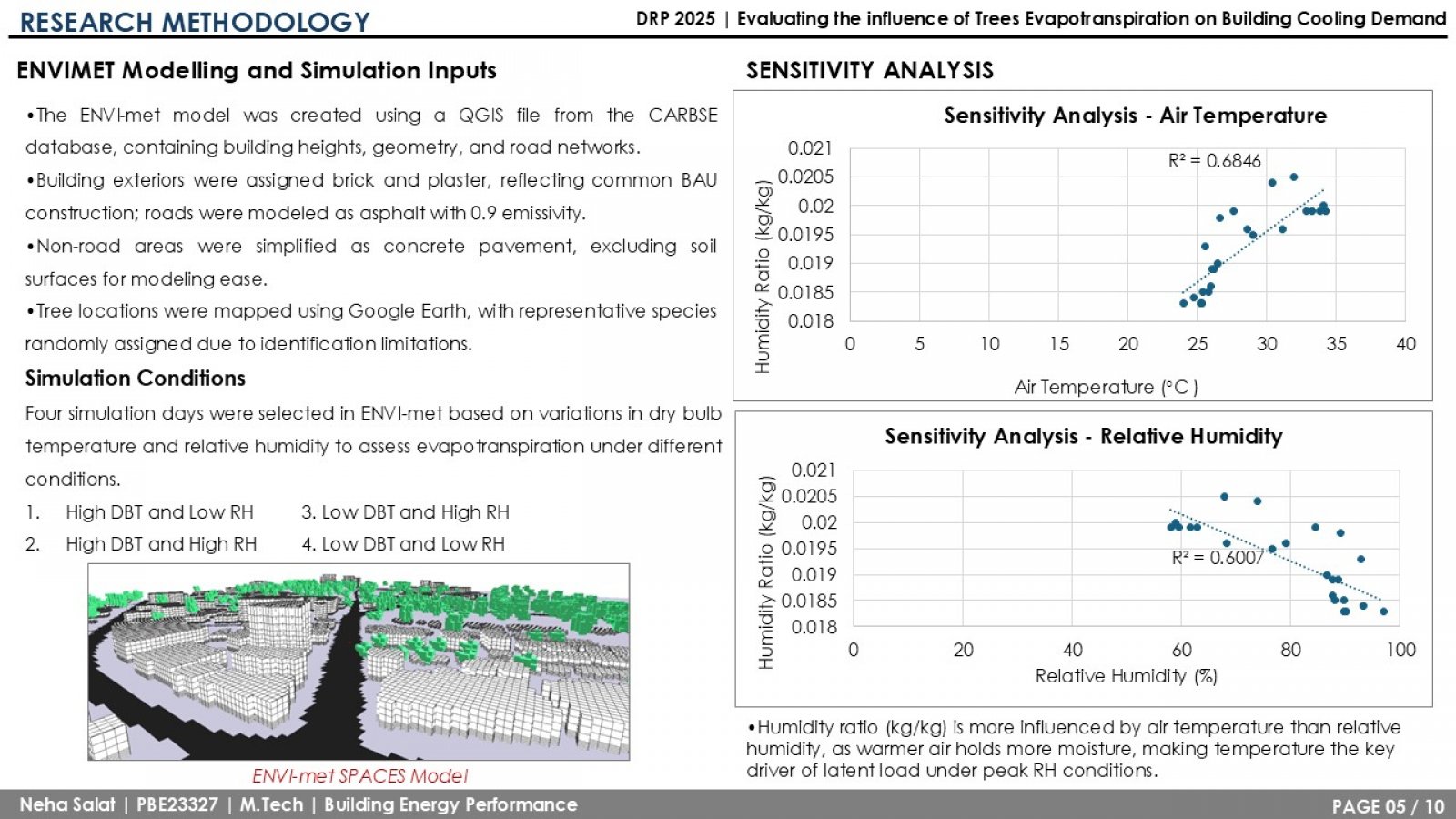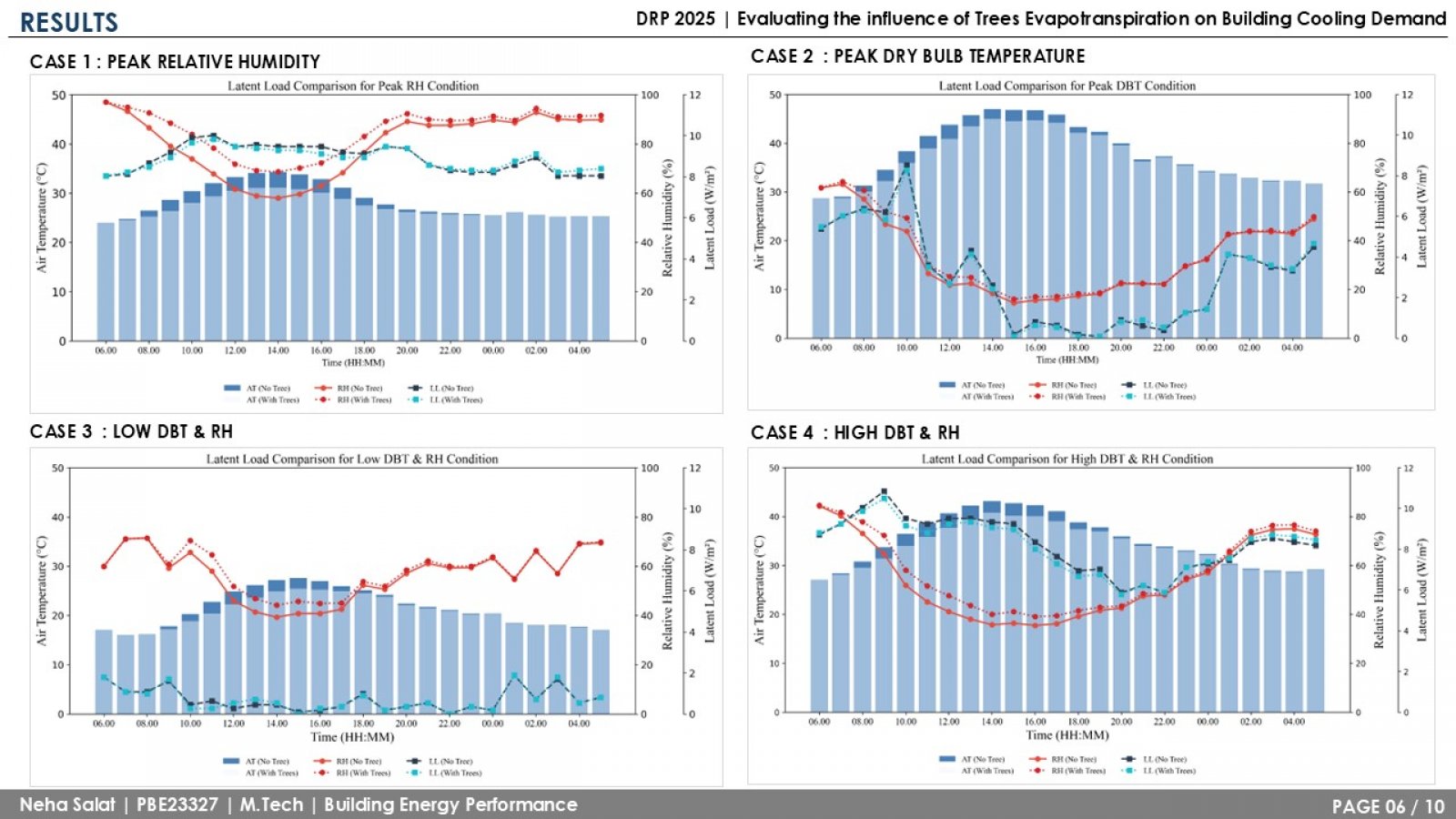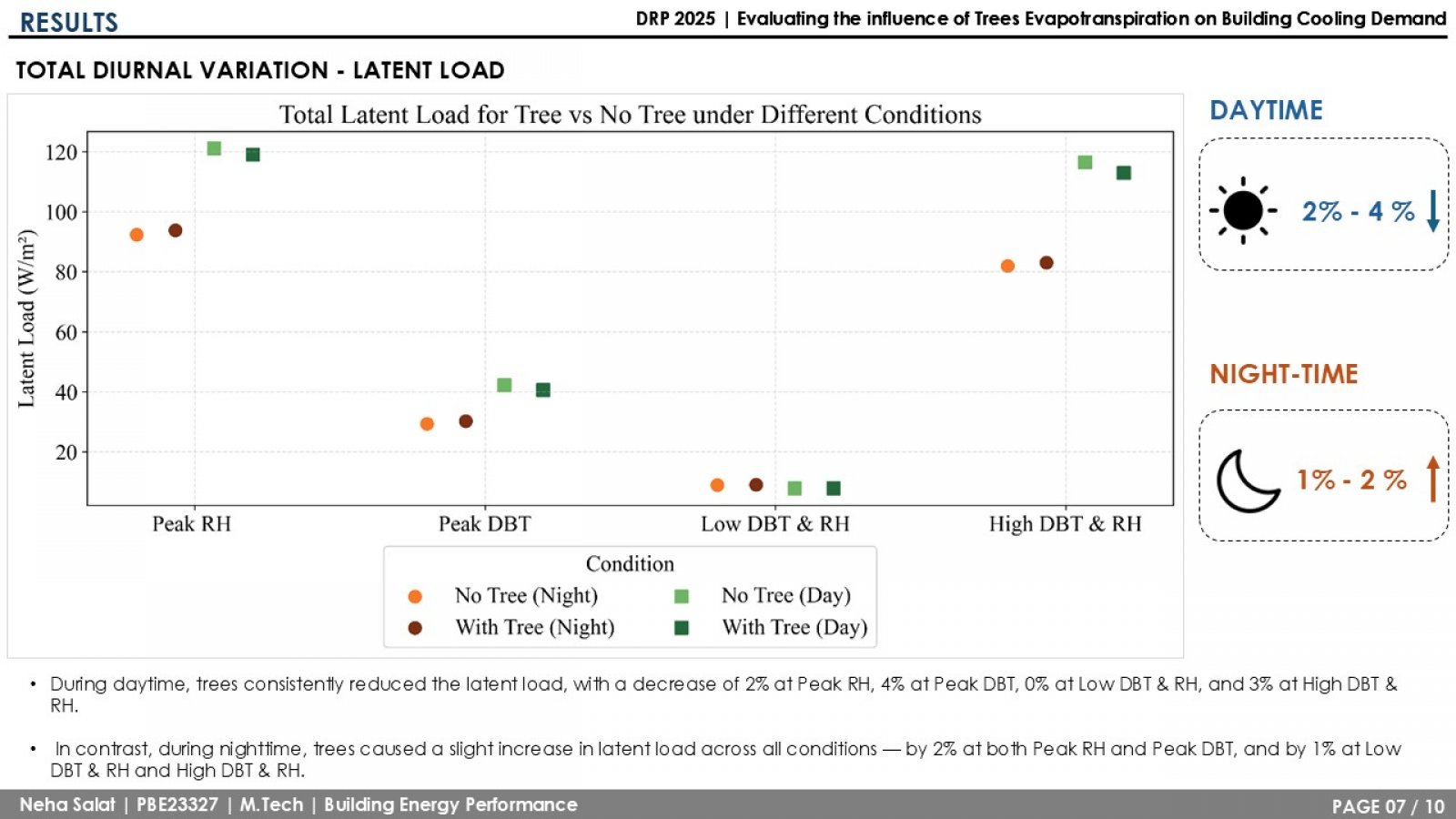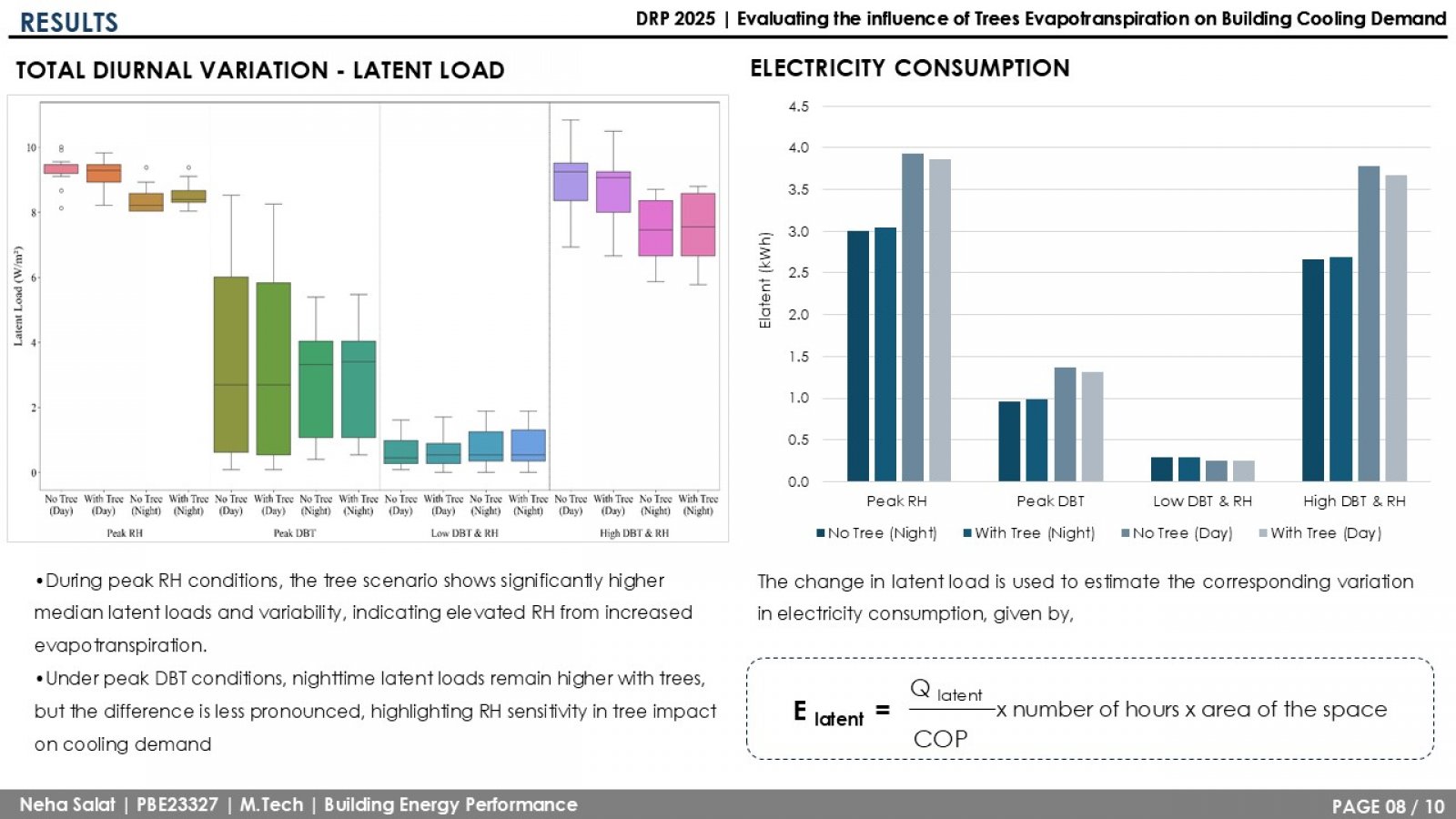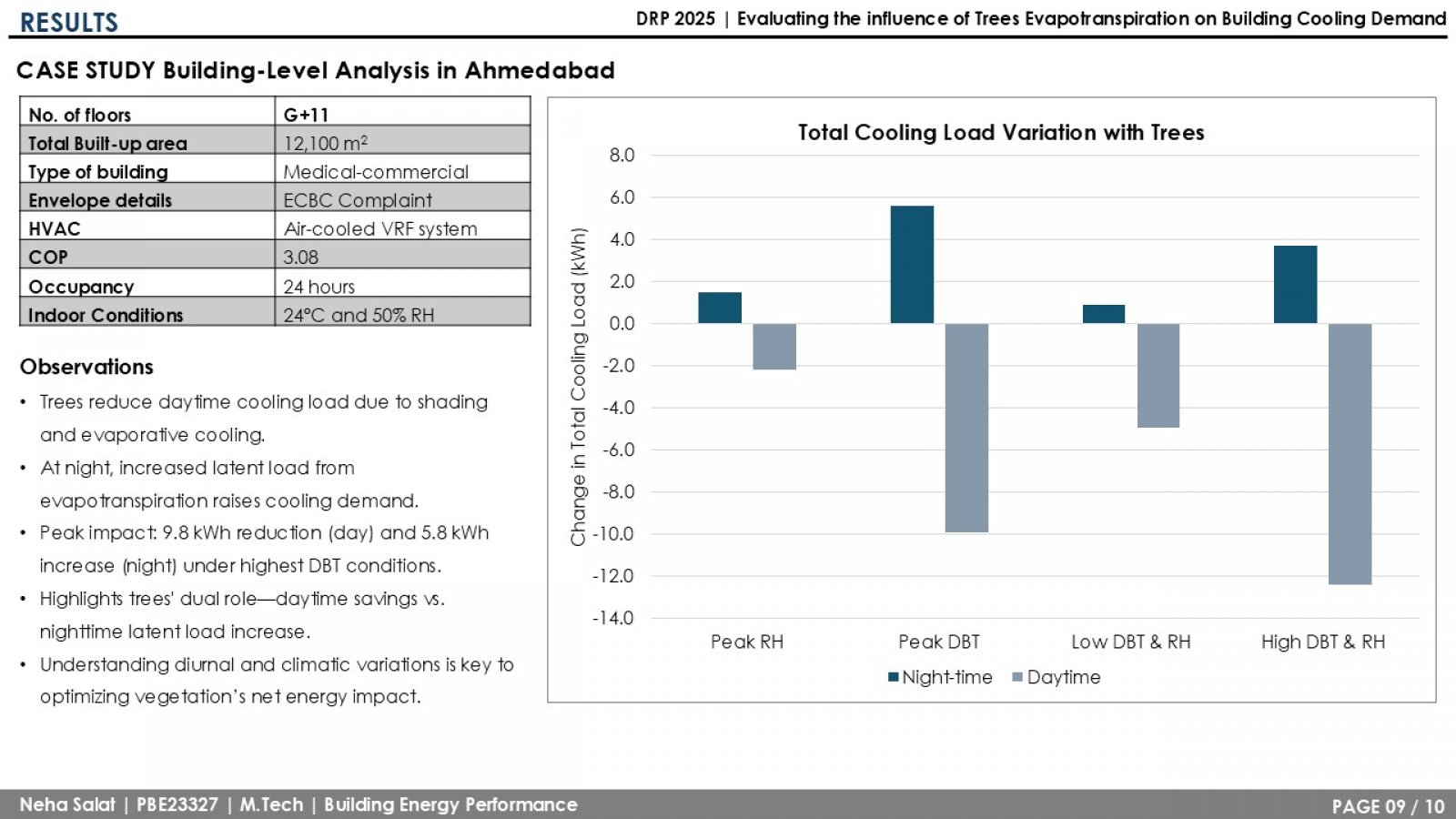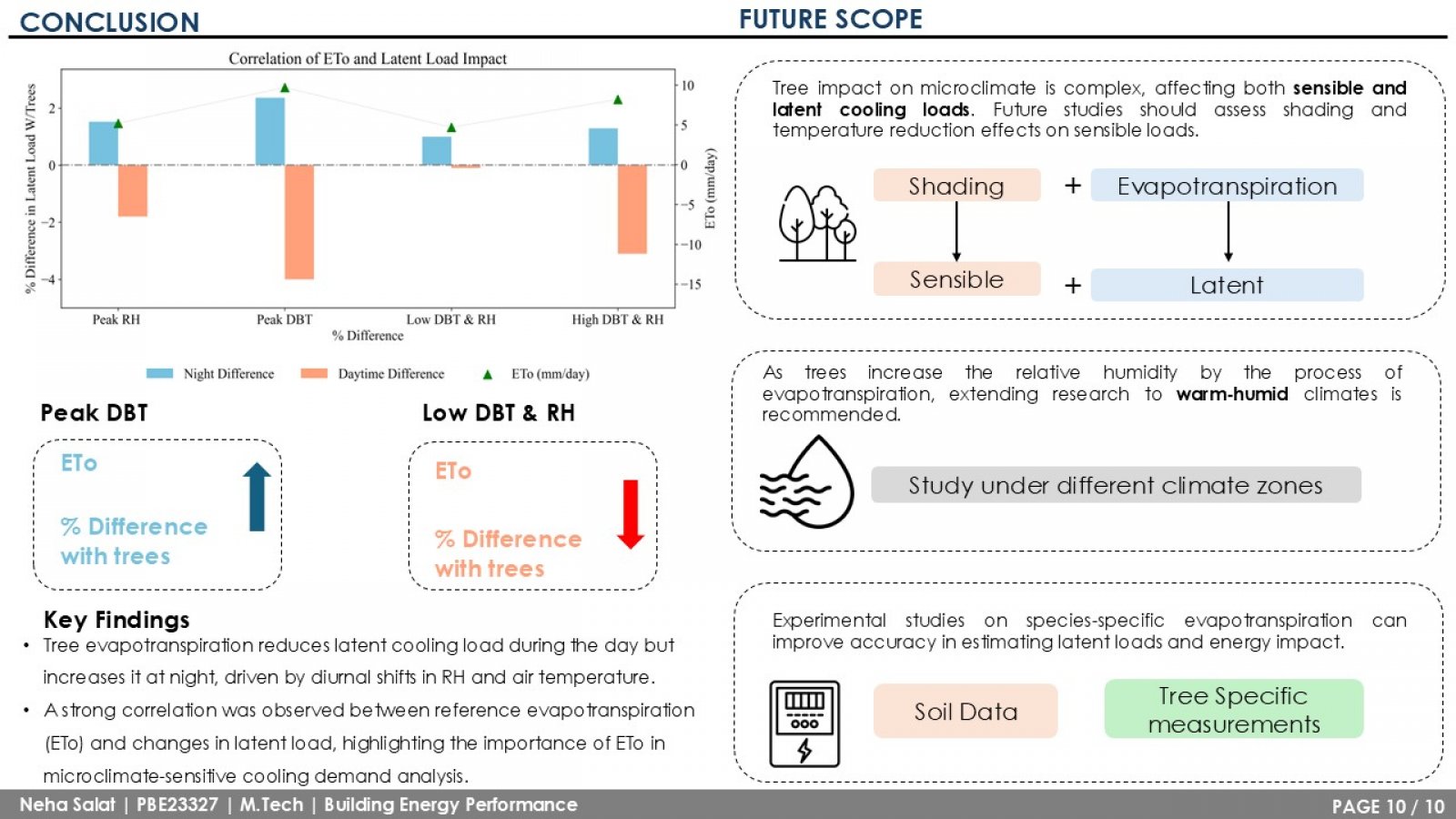Your browser is out-of-date!
For a richer surfing experience on our website, please update your browser. Update my browser now!
For a richer surfing experience on our website, please update your browser. Update my browser now!
Urban Heat Island Effect (UHIE) in growing cities increases cooling energy demand. This study quantifies how tree evapotranspiration (ET) impacts building cooling loads in Ahmedabad. A 1 sq. km area with varied land-use was analyzed using remote sensing, field surveys, and ENVI-met simulations. Tree-specific parameters like LAI and canopy density informed ET estimation via the Penman-Monteith equation. Results show ET lowers air temperature but raises relative humidity, increasing latent cooling loads—up to 2% under peak conditions. This highlights the need for context-specific analysis when integrating trees into urban energy models, offering a framework combining field data and microclimate simulation.
